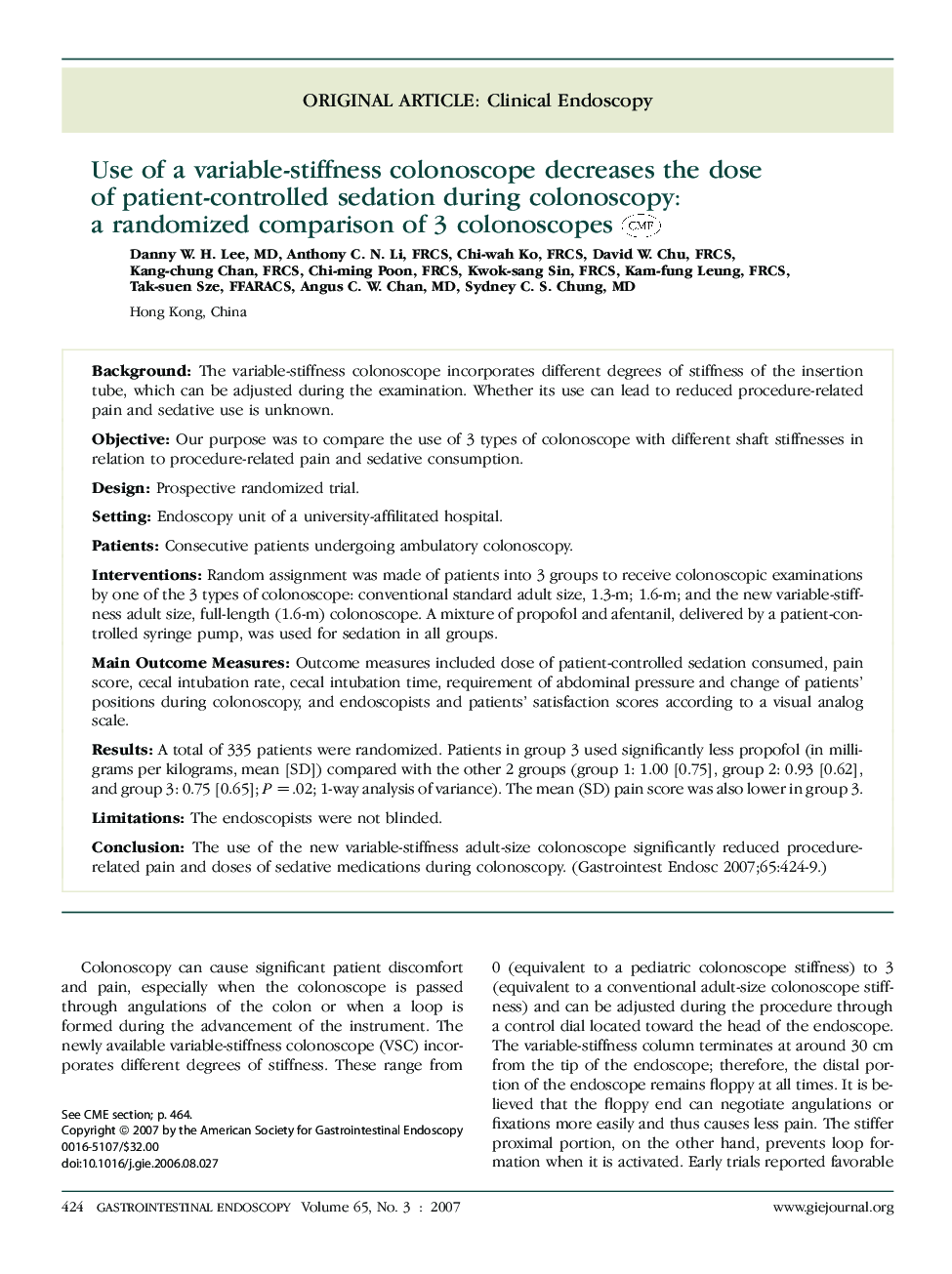| Article ID | Journal | Published Year | Pages | File Type |
|---|---|---|---|---|
| 3309358 | Gastrointestinal Endoscopy | 2007 | 6 Pages |
BackgroundThe variable-stiffness colonoscope incorporates different degrees of stiffness of the insertion tube, which can be adjusted during the examination. Whether its use can lead to reduced procedure-related pain and sedative use is unknown.ObjectiveOur purpose was to compare the use of 3 types of colonoscope with different shaft stiffnesses in relation to procedure-related pain and sedative consumption.DesignProspective randomized trial.SettingEndoscopy unit of a university-affilitated hospital.PatientsConsecutive patients undergoing ambulatory colonoscopy.InterventionsRandom assignment was made of patients into 3 groups to receive colonoscopic examinations by one of the 3 types of colonoscope: conventional standard adult size, 1.3-m; 1.6-m; and the new variable-stiffness adult size, full-length (1.6-m) colonoscope. A mixture of propofol and afentanil, delivered by a patient-controlled syringe pump, was used for sedation in all groups.Main Outcome MeasuresOutcome measures included dose of patient-controlled sedation consumed, pain score, cecal intubation rate, cecal intubation time, requirement of abdominal pressure and change of patients' positions during colonoscopy, and endoscopists and patients' satisfaction scores according to a visual analog scale.ResultsA total of 335 patients were randomized. Patients in group 3 used significantly less propofol (in milligrams per kilograms, mean [SD]) compared with the other 2 groups (group 1: 1.00 [0.75], group 2: 0.93 [0.62], and group 3: 0.75 [0.65]; P = .02; 1-way analysis of variance). The mean (SD) pain score was also lower in group 3.LimitationsThe endoscopists were not blinded.ConclusionThe use of the new variable-stiffness adult-size colonoscope significantly reduced procedure-related pain and doses of sedative medications during colonoscopy.
